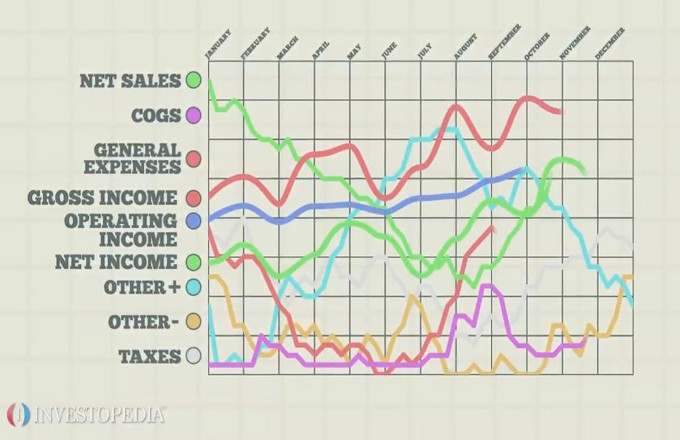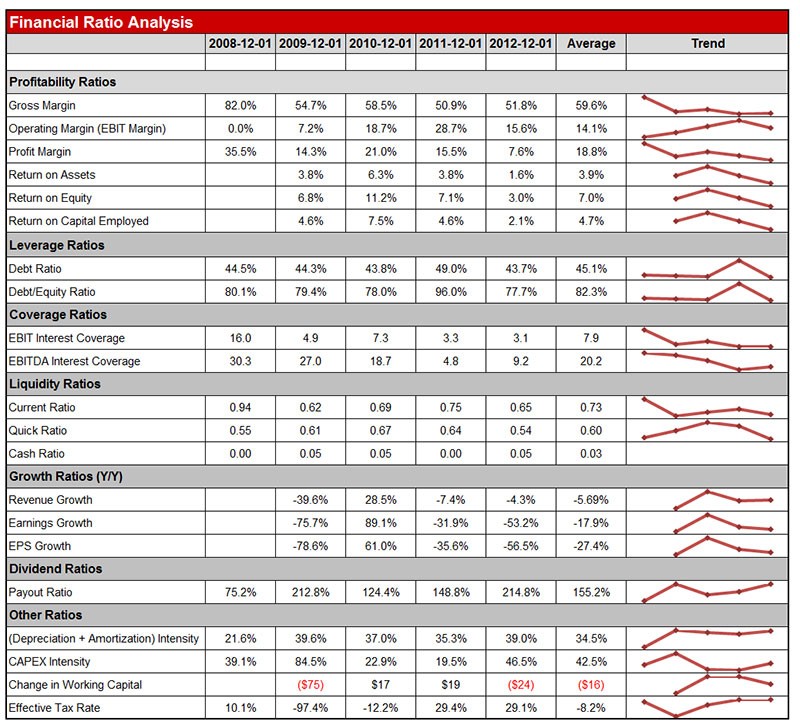Analyze Investments Quickly With Ratios
Post on: 29 Май, 2015 No Comment

Ratios can be invaluable tools for making an investment decisions. Even so, many new investors would rather leave their decisions to fate than try to deal with the intimidation of financial ratios. The truth is that ratios aren’t that intimidating, even if you don’t have a degree in business or finance. Using ratios to make informed decisions about an investment makes a lot of sense, once you know how.
There are a large variety of ratios out there, but financial ratios can be broken up into four major categories: profitability ratios. liquidity ratios, solvency ratios and valuation ratios. In this article, we’ll take a look at each of the four categories and provide an example of a simple-to-use ratio for each of them.
Profitability ratios are used to give us an idea of how likely it is that a company will turn a profit, as well as how that profit relates to other important information about the company.
One example of an important profitability ratio is the profit margin.
The profit margin is calculated as follows:
In general, the higher a company’s profit margin, the better but, as with most ratios, it is not enough to look at it in isolation. It is important to compare it to the company’s past levels, to the market average and to its competitors.
There are a couple of red flags you should watch out for with the profit margin, especially where the company is seeing decreasing profit margins year over year. This can suggest changing market conditions or where the company is seeing increasing competition or rising costs. Also, if a company’s profit margin is out of line compared to the rest of its industry, it is worth the extra effort to find out why.
If a company has a really low profit margin, it could mean it will land in a bad position if market conditions change. A really high profit margin relative to the industry could mean that the company has arrangements or advantages that might not last.
Liquidity Ratios
Liquidity is a measure of how quickly a company’s assets can be converted to cash. Liquidity ratios can give investors an idea of how capable a company will be at raising cash to purchase additional assets or to repay creditors quickly, either in an emergency situation, or in the course of normal business.
The receivables turnover ratio is a liquidity ratio that measures a company’s ability to collect on debts and accounts owed to it.
Receivables turnover is calculated as follows:
The total debt to total assets ratio is used to determine how many of a company’s assets were paid for with debt.
Total debt to total assets is calculated as follows:

When using this ratio to make an analysis of a company, it can be really helpful to look at the company’s as well as making industry comparisons. It’s not unrealistic for a younger company to have a debt to total assets ratio closer to 1 (more assets were financed by debt), as it hasn’t yet had a chance to eliminate its debt.
As a general rule, a number close to zero is generally better, because it means that more assets were paid for without debt. Remember, lenders have first claim on a company’s assets if they’re forced to liquidate. But again, it will depend on the industry, as those with highly capital intensive operations will have a higher relative debt level.
The price to earnings (P/E) ratio is the most well-known valuation ratio that compares the company’s stock price to the earnings it generates on a per-share basis. An easy way to think about the P/E ratio is that it’s a pretty good indicator of investors’ expectations of a company’s future income. That is, it’s the premium that the market is willing to pay for a particular security’s earnings.
The P/E ratio is calculated as follows:
The ratio can be compared to past levels for the company along with industry competitors and the overall market. It transforms any company’s earnings into an easily comparable measure. Basically, it will tell you how much investors are willing to pay for $1 of earnings in that company — the higher the ratio, the more they are willing to spend. But don’t think that a higher P/E ratio for one company necessarily suggests that its stock is overpriced. Different industries have substantially different P/E ratios, so the P/E really shouldn’t be used for inter-industry comparisons.
What You Need to Know
Everyone wants an edge in investing, but one of the best tools out there is frequently misunderstood and avoided by new investors. When you understand what ratios tell you, as well as where to find all the information you need to calculate them, there’s no reason why you shouldn’t be able to make the numbers work in your favor.














